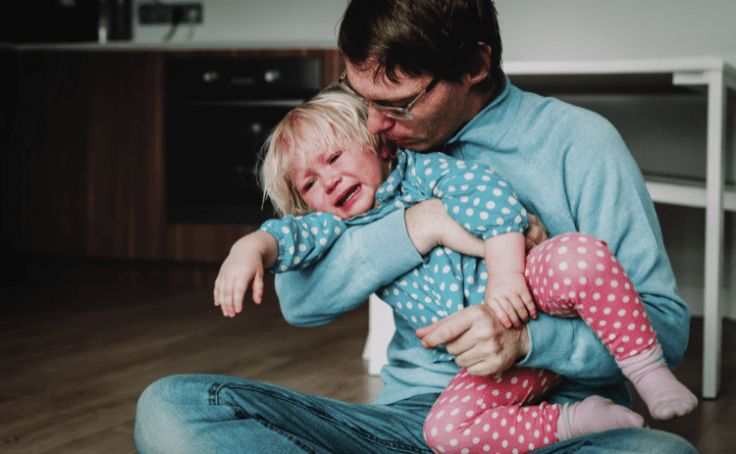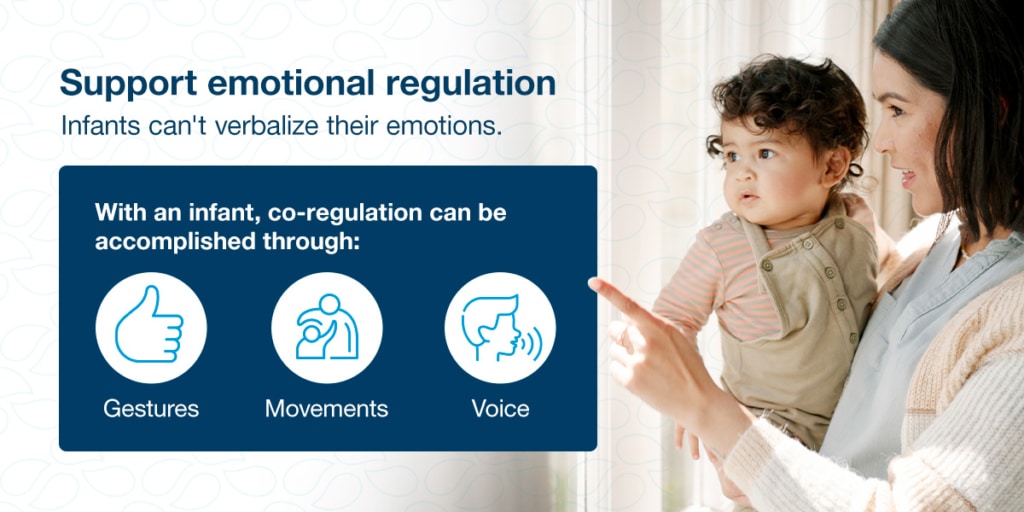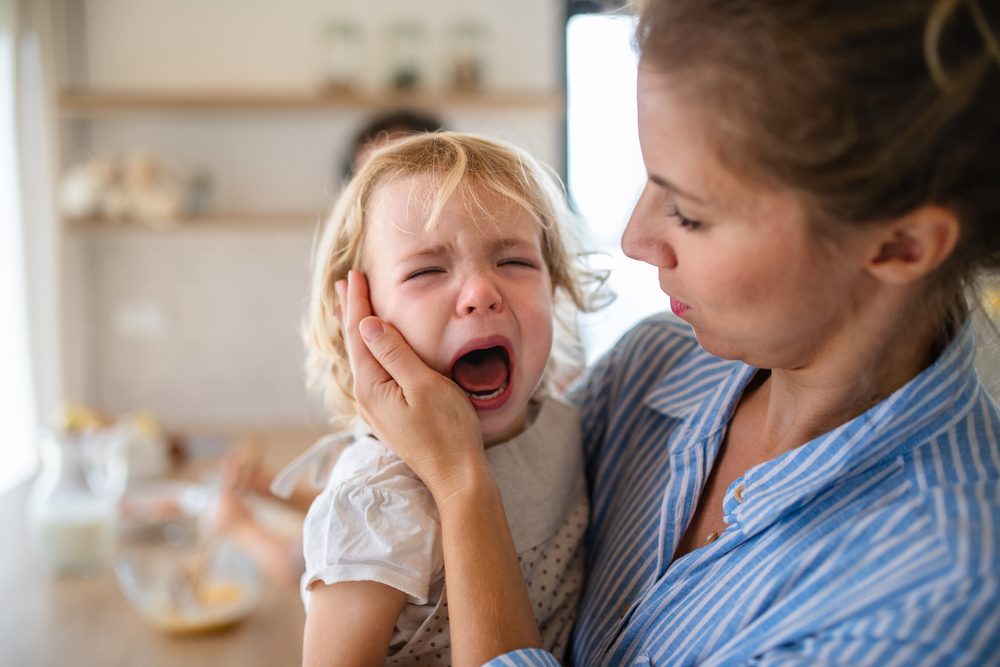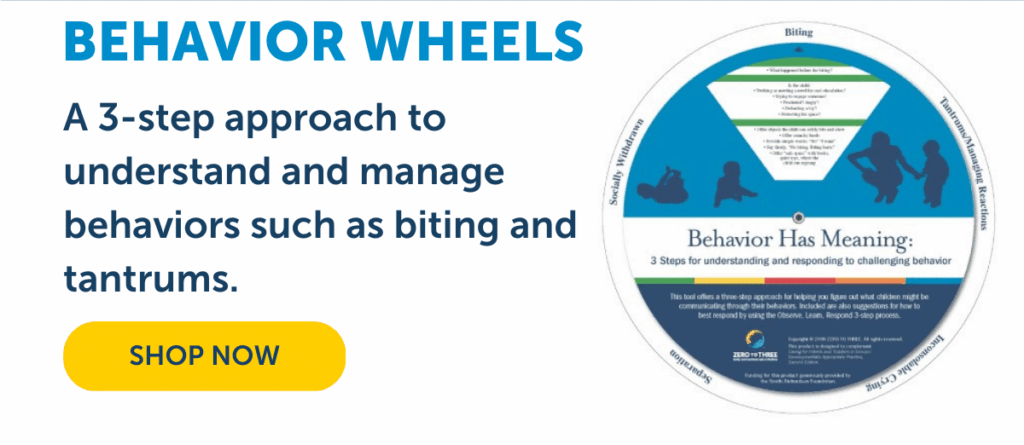Your Calm Is Their Calm: Co-Regulation Strategies for Infants and Toddlers

Key Takeaways
- Co-regulation is when caregiving adults help a child manage emotions by providing attuned, responsive support.
- Strong co-regulation in early childhood is directly connected to how well a child develops coping strategies, emotional awareness and resilience over time.
- Emotional regulation activities for infants and toddlers can support co-regulation and introduce self-regulation.
This is where co-regulation comes in.
What is co-regulation?
Co-regulation is the process of helping a child manage their emotions through supportive interactions with a caregiver.
For infants and toddlers, this might look like holding them when they cry, using a calm voice when they’re upset, or rocking them gently to sleep.
They can’t self-soothe yet. That’s why they borrow our calm. We regulate with them before they learn to do it alone.
We can begin helping children build regulatory skills starting from birth, through the process of co-regulation. Co-regulation is when caregiving adults help a child manage emotions by providing attuned, responsive support.
For example, if a child is afraid of a barking dog, the adult may scoop them up and hold them close, while allowing them to look at the dog from a distance and from the safe “home base” of a loved one’s arms.
Simple co-regulation strategies for infants and toddlers:
Stay close: Your physical presence is grounding. Sit beside them or hold them.
Use a calm tone: A soothing voice helps settle an activated nervous system.
Breathe slowly together: Your breath helps pace theirs.
Label feelings out loud: “That scared you. I’m here.”
Offer comfort before correction: Regulation comes first. Understanding follows.

Co-regulation vs. self-regulation: What’s the difference?
It’s easy to confuse the two terms, but they’re very different — especially in the early years.
Co-regulation is what you do with a baby or toddler to help them feel safe, calm, and understood.
Children eventually learn to self-regulate on their own, like taking deep breaths or asking for help instead of throwing a toy.
For infants and toddlers, self-regulation is still developing. That’s why they rely heavily on co-regulation through responsive relationships.
Infants experience stress, even if it’s not visible in the same ways as older kids. Without responsive caregiving, prolonged stress can disrupt early brain development. Early nurturing relationships lay the groundwork for mental health, emotional security, and learning capacity.
Strong co-regulation in early childhood is directly connected to how well a child develops coping strategies, emotional awareness and resilience over time.
Emotional regulation activities for kids (yes, even babies)
Here are some age-appropriate emotional regulation activities for infants and toddlers that support co-regulation and gently introduce self-regulation:
For Infants (0–12 months)
Skin-to-skin cuddle time: Lay your baby against your chest. This shared contact helps regulate heart rate, breathing, and body temperature.
Soft singing and humming: Make eye contact and sing or hum while holding or rocking. Your calm becomes their calm.
Face-to-face mirroring: Gently copy their facial expressions and sounds. This back-and-forth helps them feel seen and connected.
Peek-a-boo: Play together using a soft cloth or your hands. This teaches predictability, attention, and emotional connection.
For Toddlers (1–3 years)
Name their emotions together: “You’re mad the block tower fell down. That makes sense.” Sit beside them and let them feel it with you.
Blow bubbles as a team: Say, “Let’s blow our big feelings out,” and take turns. Matching your breath to theirs helps slow their body down.
Read “feelings books” side by side: Point to characters’ faces, talk about the expressions, and ask, “What do you think they feel?”
Create a cozy corner together: Set up a calm-down spot with a pillow, blanket, and favorite stuffed animal. Sit with them there during tough moments.
Calm-down bottle: Make a calming glitter jar and watch it settle—like training wheels for mindfulness.

Self-Regulation Games for Toddlers and Preschoolers
These games are co-regulation disguised as fun. You’re not just teaching skills; you’re practicing them together:
Freeze Dance: Dance and freeze on cue. Say, “Let’s be still like statues!” Then giggle when you both wobble. It’s about fun, not perfection.
Red Light, Green Light: Take turns playing leader and follower. Give your child a chance to say “stop” and “go” too — they love being in charge.
Simon Says: Make silly movements together such as, “Simon says wiggle your nose!”, and celebrate every try.
Emotion charades: Act out “happy,” “sad,” “angry,” or “tired” together. Use real-life examples to connect it to their day.
Sorting games: Sit together and sort objects by color or shape. Talk about what you’re doing: “Let’s slow down and pick the red ones first.”
Co-regulation takes practice
They don’t learn to regulate by being told to “calm down.” They learn by being calmed with.
Every moment you offer a soothing voice, a warm touch, or a little patience, especially during a stressful situation or tantrum, you’re teaching a child the earliest lessons in emotional safety.
So the next time a toddler melts down over the wrong color cup, remember: co-regulation isn’t about stopping big feelings. It’s about showing the child they’re not alone in them.
What do mental health issues in young children look like?



